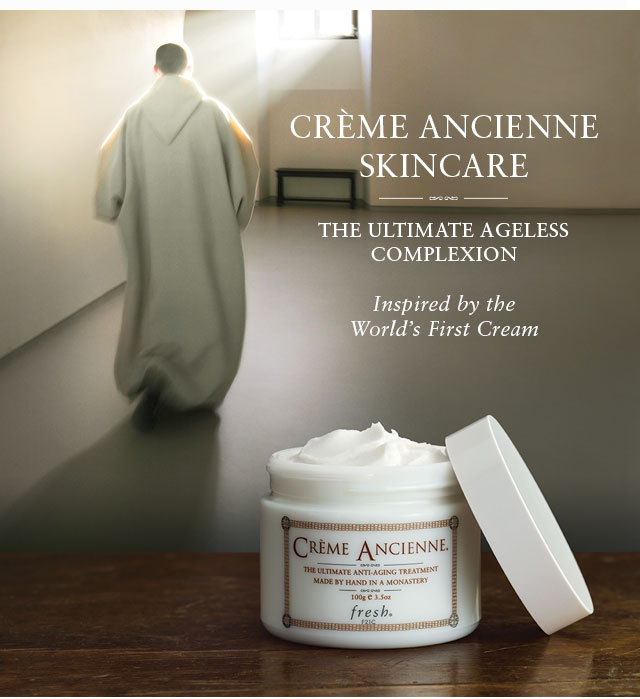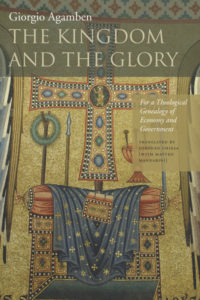For he shall grow up before him as a tender plant, and as a root out of dry ground: he hath no form nor comeliness; and when we shall see him, there is no beauty that we should desire him … and we hid as it were our faces from him; he was despised, and we esteemed him not.
(Isaiah, 53:2-3)
The man of rank and distinction, on the contrary, is observed by all the world. Everybody is eager to look at him, and to conceive, at least by sympathy, that joy and exultation with which his circumstances naturally inspire him. His actions are the objects of public care. Scare a word, scare a gesture, can fall from him that is altogether neglected.
(Adam Smith, The Theory of Moral Sentiments, p. 51)
Few, I imagine, think there is anything especially inappropriate about monks brewing and selling beer. It is well acknowledged that the beers made by Trappist monks in Belgium are the finest around, with a consensus that the hard to find West Vlettern is the best of an amazing bunch. Few Belgian beers are now literally made by the monks but through licensing arrangements these great beers now populate world markets. The monks get a healthy chunk of the profits to contribute to their favourite charities and the brewing companies delight in robust sales.
1

What about monks making a much sought after face cream? The quotes above suggest a problem. Cosmetic company Fresh makes a bestselling face cream based upon an ancient Roman recipe. Its peculiar mix of waxes and oils requires the mixing be done by hand and so in a monastery in the Czech Republic monks heat and cool ingredients over a flame and when still warm spoon the mixture into jars. The company refuses to say which order of monks makes their Elixir Ancien but will say it is a silent order and production revolves around the Holy Office.[1] Can refinement really be reconciled with veneration? Is this a case of vanity corrupting monks, of the fashion industry’s tentacles polluting? Isn’t fashion really about luxury and how can that be reconciled with service? Is it not the case that the fashion industry sits atop a mountain of privilege, just the glamorous end of a capitalism that leaves the poor as so much waste?

2
When an undergraduate in London in the mid ’80’s — the age of Margaret Thatcher — hostility to commerce was assumed. We were in the waning years of the Cold War though no one knew it at the time: faculty and students took pride in being a member of a Workers’ Revolutionary Party of one brand or another. The Wall’s later fall was sudden, it left many students feeling silly, and marginalized some academic careers that until then had been promising. This hostility to commerce and a loving regard of the state got a new shot in the arm with the credit freeze of 2008. With blame quickly heaped on bankers and CEO’s,[2] to chastise private greed, the demand of the moment was for a significant increase in the state’s supervision of the economy.[3] Christian support for this increased state intervention appears obvious if “Catholicism’s deep-seated suspicions of modern consumer capitalism” reduces to an opposition between competitive aggression and the cult of self-made and Christ-like meekness and radical dependence on the divine will.[4] If this is moral theology, our Czech monks need to get back to school, clearly.
3
By 2010, the anger at business had subsided, but not for the good, perhaps. Quietly, but surely enough, we learnt that bankers had indeed been bad but that governments also made significant mistakes,[5] and slowly a more profound worry emerged: big banks and government were not contraries, government regulators were not heroes struggling against corporations, but rather they were now mostly a hybrid;[6] multiple instances of crony capitalism[7] — or what Charles Murray calls “collusive capitalism”[8] — proved especially galling: public greed piled on top of private greed.[9]
4
A hundred years ago, the Catholic theorist Max Scheler noted that if a culture’s ethos is twisted it will deform government just as much as private enterprise (EIM, 397). And this ethos? One of the most influential contemporary philosophers, the Italian anarchist Giorgio Agamben argues that a theatre of clothes was at the heart of the twentieth century’s totalitarianism. Is our age of luxury and fashion, and our regard for the celebrities who model fashion for us, inherently malign? Agamben lays the blame for this totalitarian theatre, “the strategies of spectacular power,” squarely at the feet of Catholic moral theology, liturgy, and metaphysics.[10] He continues the anarchist tradition of political theology: a method of revolution, it exposes theological patterns inside secular life in order to then eliminate them politically. Agamben’s work is impressive. He is a rare thinker who ponders how clothes function politically. However, if Agamben is right then a lot of Catholics are deeply confused. Catholic philosophy is anti-totalitarian and, uncomfortably, Catholic thinkers have identified a range of totalitarian attributes in the modern West. I make this case in my books, Ecstatic Morality, To Kill Another, and Tolkien: Philosopher of War, but one could also read Catholics like Scheler, Kolnai, Przywara, popes Benedict and Saint John Paul II, and not least, Pope Francis on technoscience.

5
Amongst other markers of totalitarian practice,[11] crony capitalism is a fair indicator.[12] The realization that government is a dubious answer to the contemporary economy had some, like the FT’s John Lloyd, express a very sensible hope that a new structure of ownership might emerge “that can promote both responsibility and decency, and which has the popular and moral resources to oppose, more robustly than presently, those forces that leech away social capital for private and criminal enjoyment” (FT, March 9, 2010). A popular focus was the idea of trusts, resistant to government raiding and invulnerable to private manipulation. Trusts counter a dispersed ownership of a company stock traded internationally in favour of a stewardship obligated to think long-term about the health of the company, the people who work there, and the region.[13] Many are leery, however. Samuel Brittan notes that whilst individual examples of market socialism are indeed admirable — he cites the darlings of much Catholic reflection on business, the John Lewis Partnership and Mondragon — “it is just a fact that wholesale “market socialism” has never worked.”[14] In light of these hopes and worries, this book is an effort to show that the German Tory, Max Scheler, has a practicable business model in his idea of the estate that gets the morals, politics, and metaphysics right. Distributism is a social philosophy inspired by Pope Leo XIII’s 1891 encyclical On the Condition of the Working Classes. It advocates a wide distribution of property aimed at the autonomy of families and micro communities. Scheler’s idea of the estate describes the attributes and purpose of such sustainable communities. I want to show that one of the commanding heights of our civilisation, the fashion industry, already has elaborated estates. There is a theatre of clothes that answers Agamben’s worries and that is also a friend rather than an enemy of moral theology.

6
Some may think this last sentence rather odd: Why should moral theology much care about so vapid an industry? A moment’s reflection shows such a response lamentable. The point is not even that the fashion industry is a vast industry but that one cannot understand social human beings without thinking about clothes. Persons are inherently relational[15] and we desire and communicate through the medium of clothes and adornments. If moral theology ignores clothes it must misconstrue moral life. This is a point made by the Whigs David Hume and Adam Smith, who are correct that adornment is the leading dynamic of our moral psychology in commercial civilisation. It is, I believe, a profound oversight that Catholic moral thought is yet to think of the economy through the lens of the fashion, design, and luxury industries. I think those Czech monks are onto something: the linking of the Tory estate with Whig fashion.
7
This book is a work of business ethics. It includes detailed discussions of broad fashion trends and business models. People working in the fashion industry will find a theoretical and moral elaboration of their industry in these pages, and I believe they will find it interesting. I hope business ethics professors might see in it a model for how and what to teach in their classes: the fashion industry makes for a good “indicator species” for business ethics. I employ ethical theorists seldom seen in the very narrow and predictable business ethics textbooks used throughout the university system. Rare is the business ethics textbook that departs from the tried and true trio of virtue ethics, utilitarianism, and Kantianism. I make much use of value ethics, the Scottish school of the sentiments, and CST. Written primarily by popes, Catholic Social Thought (CST) is a modern tradition of Catholic thinking about values and civilisation dating to Pope Leo XIII. This tradition has frequently singled out the economy for special attention and also speaks to the not unconnected topics of sexuality, homicide, Church and state, and other matters of social philosophy. This tradition is both odd and marvellous, I think. It is a unique phenomenon: every few years a reigning pope publishes a formal philosophical and theological set of arguments about some matter of human development. I know of no other institution, political or religious, which regularly puts before people a set of arguments and basically asks: “Here are our philosophical arguments, now what are yours?”
8
The book aims, therefore, to contribute to philosophical and moral theology. Theoretically, it relies on Scheler (Distributivism) and proposes a business ethics that combines Smith (Fashion) and Aquinas (moral theology). Like my previous books, the theory offered here is broadly Thomistic.[16] I make use of passages from Thomas on vanity, clothes, and play; I rely on themes from the papal tradition of Catholic social thought infused by the spirit of Thomas; and the Thomist Erich Pryzwara is present throughout. The book continues my interest in Thomas’s natural law theory. In Ecstatic Morality and Sexual Politics (2005) I linked his natural law to his theory of the body. As an inquiry into embodiment, this book continues that interest but it also adds to my commentary on Aquinas’s theory of homicide in To Kill Another (2010). I want to take seriously the question whether vanity is a deadly sin and whether fashion contributes to the culture of death; a point strongly emphasized by Pope Francis. Tolkien and the Lord of the Rings: A Philosophy of War (2014) looked into Aquinas’s just war theory but also framed the study of Tolkien in light of the Whig-Tory debate. That debate features prominently in this book and not least the resources I gather from the Scottish critique (Reid and Ferguson) of the Scottish Enlightenment (Hume and Smith). These varied but linked themes unite in the claim that luxury and privilege are not opposed to veneration and justice. In the moral ideal of the knight, there is an ethics of nobility that combines motifs of refinement, obedience, and service. This ideal is a practicable model for contemporary business, as I will show.
9
There are many people to thank for marvelous conversations. The following people all contributed to the ideas in this book: Patrick Beldio, Brendan Sammon, Alex Rosenthal, Paul Seaton, Fr. John Peck, S. J., John Betz for his translation of Przywara, Brian Murray, Meghan Page, Dan McClain, Mike Runnels, and Tom Hibbs. Hugh thanks to Andrea Robiglio who has always offered support for my work and models the highest ideal of the superbly dressed philosopher. I want to thank St. Vincent’s University (Latrobe, PA) and Baylor University for invites to speak to their students about the ethics of the fashion industry. Students in Loyola’s undergraduate, Liberal Studies, and MBA programmes have been gracious audiences.
10
This website would never have been possible but for professors Julie Sayo and Paola Pascual-Ferra, both of Loyola’s Communication Department. A hearty thanks for Julie’s students who in Spring 2016 took me on as their class’s client!
Lastly, a huge thanks to my wife, Jennifer, and daughters, Julia, Charlotte, and Beatrice.
11
[1] “The Beauty of a Fresh Perspective” (Jean Godfrey-June).
[2] Vance Packard points out that industry leaders and celebrities are not America’s super rich, and seldom are people aware who actually are the ultra rich. See his The Ultra Rich (Little, Brown and Co.: Boston, 1989), pp. 19-24.
[3] “The Invisible Hand, Trumped by Darwin” (Robert H. Frank), NYT, July 12, 2009. When most moralistic and punitive, Frank fantasizes about government taking wealth from the rich to curb their indulgence in luxury (See Cass Sunstein’s review of Robert H. Frank’s Luxury Fever [Vanity Fair, March 29, 1999]).
[4] “What to Look for in a New Pope” WSJ March 9, 2013.
[5] “Three Years On – and the Markets are Masters Again,” (Philip Stephens) FT, July 30, 2010.
[6] See Samuel Brittan on “the constant movement of senior figures between Wall Street and the US Treasury Department” (“A Credo for a Revived Capitalism,” [Samuel Brittan], FT, May 7, 2010). See also Paul Ryan’s review of the Jeffrey Sachs book, The Price of Civilization, “America’s Enduring Ideal,” WSJ, October 1-2, 2011.
[7] There is polling evidence that people who complain about capitalism are really complaining about the cronyism they see endemic to it: “A Fading Faith in Capitalism” (Tim Montgomerie), WSJ, November 7-8, 2015.
[8] “Why Capitalism Has an Image Problem” (Charles Murray), WSJ, July 28-29, 2012.
[9] See Barry C. Lynn, Cornered: The New Monopoly Capitalism and the Economics of Destruction (Hoboken, NJ: Wiley, 2010).
[10] Giorgio Agamben, The Kingdom and the Glory (Stanford University Press, 2011), pp. 253-59.
[11] “Rise of the Warrior Cop,” WSJ, July 20/21, 2013.
[12] A. Kolnai, “Three Riders of the Apocalypse,” Privilege and Liberty and Other Essays in Political Philosophy (Lexington, 1999).
[13] See the Schumpter Blog at The Economist, March 2, 2013, p. 66.
[14] “A Credo for a Revived Capitalism,” (Samuel Brittan), FT, May 7, 2010.
[15] J. Ratzinger, Introduction to Christianity (Ignatius, 2004), pp. 179-83.
[16] For a discussion of where my work stands amongst the camps of modern-day theology, see John Milbank, “The New Divide: Romantic Versus Classical Orthodoxy,” Modern Theology, 26:1 (January 2010), pp. 26-38, especially footnote 11. For discussion of my account of natural law and St. John Paul II’s account of the body, see M. Levering, “Natural Law and Natural Inclinations: Rhonheimer, Pinckaers, McAleer,” The Thomist Vol. 70:2 (April 2006); F. Kerr, Twentieth-Century Catholic Theologians (Blackwell, 2007); T. Rowland, “Natural Law. From Neo-Thomism to Nuptial Mysticism,” Communio, Vol. 35 (2008); D. Crawford, “Natural Law and the Body,” Communio, Vol. 35 (2008); and throughout Matt Levering’s, Biblical Natural Law (Oxford, 2008).